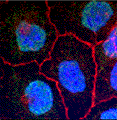Biochemistry, Department of
Document Type
Article
Date of this Version
2018
Citation
Plant Physiology®, December 2018, Vol. 178, pp. 1507–1521
Abstract
Polyacetylenic lipids accumulate in various Apiaceae species after pathogen attack, suggesting that these compounds are naturally occurring pesticides and potentially valuable resources for crop improvement. These compounds also promote human health and slow tumor growth. Even though polyacetylenic lipids were discovered decades ago, the biosynthetic pathway underlying their production is largely unknown. To begin filling this gap and ultimately enable polyacetylene engineering, we studied polyacetylenes and their biosynthesis in the major Apiaceae crop carrot (Daucus carota subsp. sativus). Using gas chromatography and mass spectrometry, we identified three known polyacetylenes and assigned provisional structures to two novel polyacetylenes. We also quantified these compounds in carrot leaf, petiole, root xylem, root phloem, and root periderm extracts. Falcarindiol and falcarinol predominated and accumulated primarily in the root periderm. Since the multiple double and triple carbon-carbon bonds that distinguish polyacetylenes from ubiquitous fatty acids are often introduced by Δ12 oleic acid desaturase (FAD2)-type enzymes, we mined the carrot genome for FAD2 genes. We identified a FAD2 family with an unprecedented 24 members and analyzed public, tissue-specific carrot RNA-Seq data to identify coexpressed members with root periderm-enhanced expression. Six candidate genes were heterologously expressed individually and in combination in yeast and Arabidopsis (Arabidopsis thaliana), resulting in the identification of one canonical FAD2 that converts oleic to linoleic acid, three divergent FAD2-like acetylenases that convert linoleic into crepenynic acid, and two bifunctional FAD2s with Δ12 and Δ14 desaturase activity that convert crepenynic into the further desaturated dehydrocrepenynic acid, a polyacetylene pathway intermediate. These genes can now be used as a basis for discovering other steps of falcarin-type polyacetylene biosynthesis, to modulate polyacetylene levels in plants, and to test the in planta function of these molecules.
Included in
Biochemistry Commons, Biotechnology Commons, Other Biochemistry, Biophysics, and Structural Biology Commons



Comments
© 2018 American Society of Plant Biologists.
Open access
doi: 10.1104/pp.18.01195